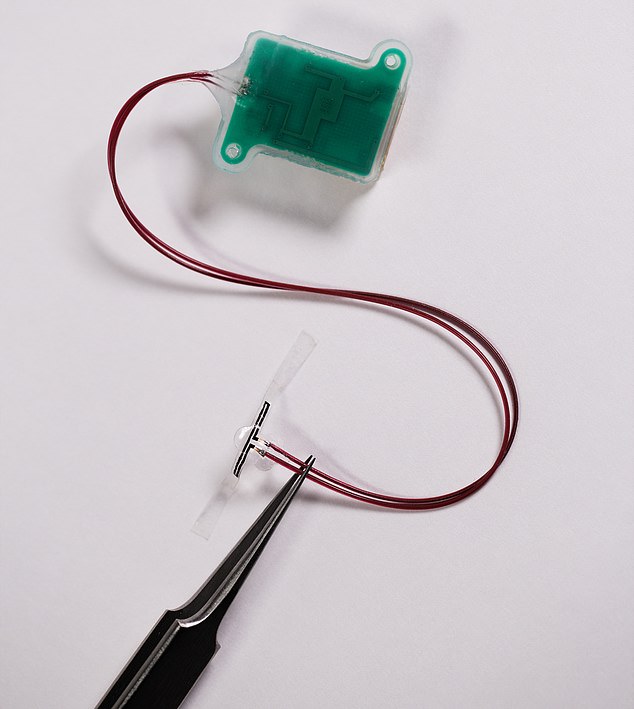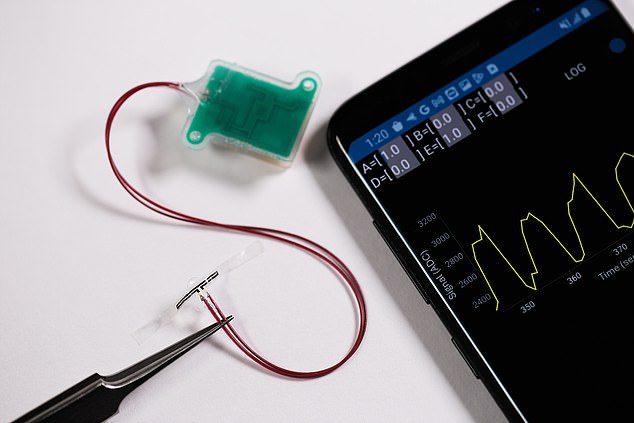It’s a dilemma we’ve all faced at some point: should you run to the bathroom now or can you wait?
Now, experts have developed an app for implants and phones that could one day take the guesswork out of the equation.
Researchers have designed a soft, flexible, battery-free implant that adheres to the wall of the bladder to detect how full it is.
It then wirelessly (and simultaneously) transmits data to a smartphone app, so users can monitor their bladder fullness in real time.
The development marks the first example of a bioelectronic sensor that allows continuous monitoring of bladder function over an extended period, the researchers said.

The soft, stretchable sensor is the elongated section near the tip of the tweezers. The green box is the implantable ‘base station’, containing electrical components to power the device and transmit data wirelessly.


The device wirelessly and continuously transmits data to a smartphone app, so users (and their doctors) can monitor bladder filling and function in real time.
In small animal studies, the system successfully provided real-time measurements of bladder filling and emptying over 30 days.
Then, in a study with non-human primates, the system successfully delivered information for eight weeks.
The researchers also showed that the sensors are sensitive enough to detect bladder tension due to very low urine volumes.
Professor Guillermo Ameer, from Northwestern University in Illinois, co-led the work.
He said: “In addition to monitoring filling, the app will be able to send warnings to the patient and then direct them to the location of the nearest toilets.”
The team said the device could be a game-changer for people with paralysis, spina bifida, bladder cancer or end-stage bladder disease, where bladder function is often compromised and surgery may be necessary. bladder reconstruction.
“If the nerves in the bladder are damaged by surgery or a disease such as spina bifida, the patient often loses sensation and is not aware that their bladder is full,” Professor Ameer said.
‘To empty the bladder, they often have to use catheters, which are uncomfortable and can cause painful infections.
“We want to eliminate the use of catheters and avoid current bladder function monitoring procedures, which are very invasive, very unpleasant and must be done in a hospital or clinical setting.”
To monitor the bladder, the new device consists of multiple sensors, which work together to measure a simple parameter: tension.
As the bladder fills, it expands.
The fuller the bladder is, the more it stretches. This stretch pulls on the elastic device to indicate tension.
Likewise, when the bladder empties, it contracts, which relieves tension.
As the sensors detect different levels of voltage, the device uses built-in Bluetooth technology to transmit this information to a smartphone or tablet.
The team said their sensor system can also allow doctors to monitor their patients remotely and continuously to make more informed and faster treatment decisions.
Professor Ameer said: ‘This work is the first of its kind adapted for human use.
‘We have demonstrated the possible long-term role of the technology.
“Depending on the use case, we can design the technology to reside permanently within the body or to dissolve harmlessly once the patient has fully recovered.”
The findings were published in the journal Proceedings of the National Academy of Sciences.
